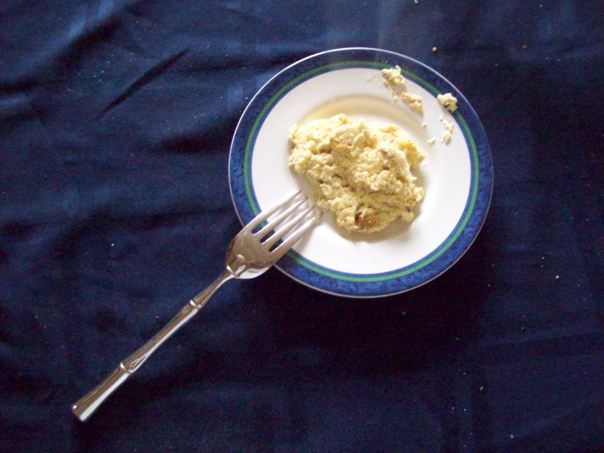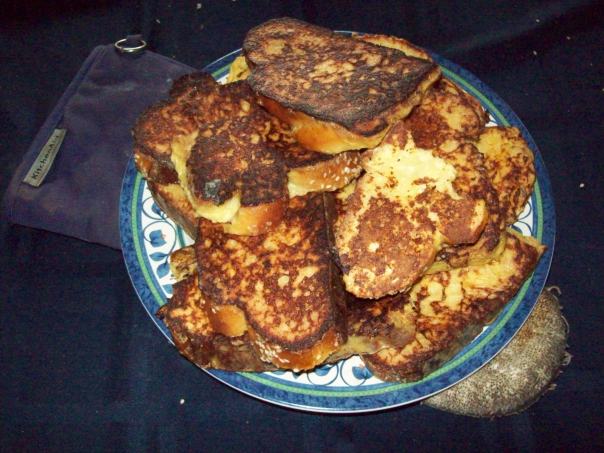כִּֽי־תָצ֣וּר אֶל־עִיר֩ יָמִ֨ים רַבִּ֜ים לְֽהִלָּחֵ֧ם עָלֶ֣יהָ לְתָפְשָׂ֗הּ לֹֽא־תַשְׁחִ֤ית אֶת־עֵצָהּ֙ לִנְדֹּ֤חַ עָלָיו֙ גַּרְזֶ֔ן כִּ֚י מִמֶּ֣נּוּ תֹאכֵ֔ל וְאֹת֖וֹ לֹ֣א תִכְרֹ֑ת כִּ֤י הָֽאָדָם֙ עֵ֣ץ הַשָּׂדֶ֔ה לָבֹ֥א מִפָּנֶ֖יךָ בַּמָּצֽוֹר: רַ֞ק עֵ֣ץ אֲשֶׁר־תֵּדַ֗ע כִּ֣י לֹא־עֵ֤ץ מַֽאֲכָל֙ ה֔וּא אֹת֥וֹ תַשְׁחִ֖ית וְכָרָ֑תָּ וּבָנִ֣יתָ מָצ֗וֹר עַל־הָעִיר֙ אֲשֶׁר־הִוא֙ עֹשָׂ֧ה עִמְּךָ֛ מִלְחָמָ֖ה עַ֥ד רִדְתָּֽהּ:־
When you lay siege to a city for a long time in order to capture it, do not take an axe to its trees to destroy them; you may eat from them, but not destroy them. Is a tree a person to whom you should lay siege? You may destroy a tree that you know is not a fruit-bearing tree, and use it to build siege works against the city that is warring with you until it falls. (Deuteronomy 20:19-20)
This passage, forbidding the destruction of fruit trees during a siege, is the basis for a broad swath of Jewish law known as bal tashchit, roughly “do not destroy.” A quick summation of bal tashchit would go something like this: Do not needlessly waste resources, or exhaust a resource in a way that minimizes the benefit derived. For example, throwing a perfectly good raw potato in the garbage is prohibited, but so is eating it raw, since this provides neither the nutrition nor the enjoyment normally associated with potatoes. (Now I know what I’m having for lunch.) Jewish environmental groups often cite the principles of bal tashchit, if not the specific laws, as a religious foundation for ecological conservation programs.
I don’t know if that’s where I get my aversion to wasting or throwing out food, but I’m not above supporting a personal preference with a religious decree when the latter so obviously endorses the former (which happens to be a good idea, regardless of its source). Either way, a desire to eat everything one cooks raises the question of what to do when leftovers begin to pile up, and a little creativity never hurts. Old black bean chili can be stretched into a platillo moros y cristianos, cold pasta supplemented with fresh vegetables to become a salad, and sturdy leftover greens converted into colcannon or bubble and squeak. (As so often happens when citing the names of traditional English dishes, I feel obligated to assert that I am not making this up. See also “toad in the hole,” “singing hinny” and “London bloomers.”)
At issue on Sunday was the remainder of an enormous symbolic challah. Luckily, this posed no challenge. Ashkenazi Jews are far from perfect: We can be excessively argumentative, we sometimes wear makeup like this, and we can’t seem to convince our children that our food is worth eating. There is one thing, though, at which we excel beyond comparison, something that nobody can take away from us. Our celebratory breads make the best French toast in the universe.
Don’t believe me? Consider the following table of Google searches and their respective hit counts:
- challah french toast; 464,000 hits.
- baguette french toast; 320,000 hits.
- brioche french toast; 305,000 hits.
- wonderbread french toast; 17,500 hits.
- schwarzbrot french toast; 4,610 hits.
- pita french toast; 797,000 results, but not really. The first actual recipe describing itself as “Pita French Toast”—or at least the first one shown to my computer—contains fat-free cream cheese, Cool Whip Light and Splenda; from this we must infer that pita-based French toast is not meant to be eaten by humans, and can therefore be soundly dismissed for the purposes of this discussion.
The dish that many English speakers call “French toast” really is French, though the French do not call it pain grillé (“toast”) as one might expect, nor notre pain grillé (“our toast”). They call it pain perdu, “lost bread,” reflecting the need to rescue day-old bread that is already drier and harder than anyone would like. (Americans accustomed to heavily enriched and sometimes artificially conditioned doughs may not realize that a traditional Parisian baguette, made from only flour, water, salt and yeast, has a shelf life of about 24 hours from the time it is baked.) French toast is probably the most popular of the many dishes meant to use up stale bread, so much so that most of us don’t even wait for the bread to get dry before making it. Still, best to treat the advent of old bread as an opportunity.
Kemach Torah’s Challah French Toast
- Cut one medium-to-large loaf of leftover challah (or a bunch of rolls, or part of a gigantic loaf, and it’ll never be the same twice, so don’t worry about it) into 3/4 inch thick slices.
- In a large measuring cup, combine 6 large eggs, a pinch of salt, 1/2 teaspoon vanilla extract (or another extract, or some cinnamon) and enough buttermilk to bring the volume of all the liquids to somewhere between 2 1/2 and 3 cups. Beat until well combined, then pour into a wide glass baking dish (I use a 13″ x 9″ pan).
- Lay as many slices of bread in the dish as will fit. Heat a griddle or skillet over medium heat, then grease with a small amount of butter. Turn the bread over in the batter, then place it on the griddle oriented the same way it was originally—in other words, the original “down” side should now be the “down” side. (This gives the batter on the top time to soak into the bread while the bottom side, more thoroughly soaked by now, is busy cooking.) Once you remove the bread from the soaking pan, replace it with more bread.
- Flip each piece of bread when the bottom is browned but not too dark, reducing the flame if the pieces are burning. When both sides are done, transfer to a plate in a low oven to keep warm until serving.

